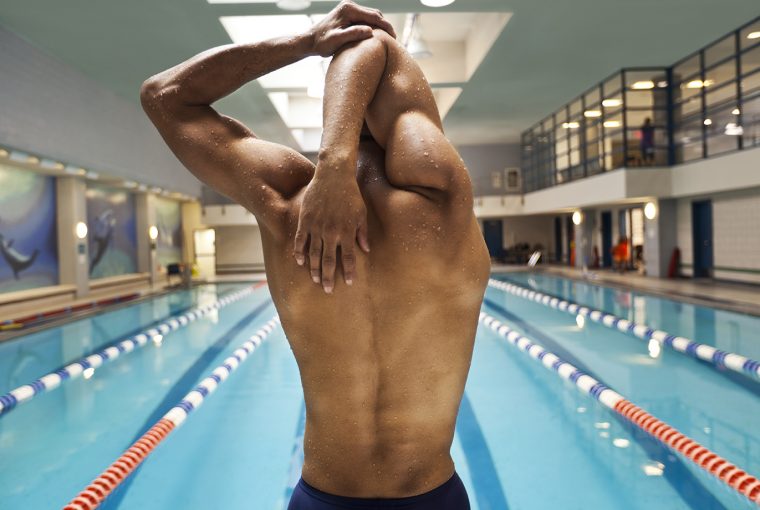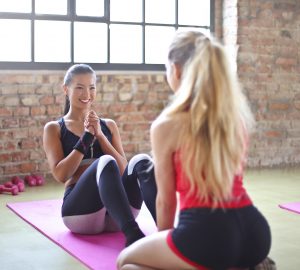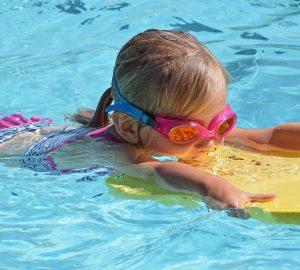People have two major hang-ups with swimming. The first is finding a lap pool that’s convenient (Hard to help you there, but surely you have a YMCA nearby.) The second is how hard swimming feels. We can’t really help you there either. While just 20 minutes in the pool can burn more than 250 calories—the same as running—swimming is a full body workout that introduces new challenges. “It engages every fiber of muscle from your core to your extremities,” says Morgan Mabe, swim coach at Asphalt Green in New York City. There are no other sports equally tough on your upper body and your lower body while being gentle on joints. Not only that: “The anaerobic aspect of the sport will instantly raise your heart rate as it stimulates hypertrophy—essentially, muscle growth.” If you’re a sometime swimmer, start by focusing on technique. Regardless of your level, trade secrets from the pros can make the experience more enjoyable. Now, that we can help you with.
As we established, propelling yourself through the water is hard. So a few pointers from experts in the field can’t hurt.
1. Warm Up on Dry Land
The sport places demands on the legs (calves in particular), back, and shoulder, says Brian Towin, a physical therapist in Atlanta who specializes in swimming. Stave off leg cramps with sprinters’ moves: Stand a few feet in front of a wall and, using it as support, step one foot back and bend front leg. Switch, then pull each leg to your butt for a quad stretch. Prep your back with side bends: Stand with feet together, arms overhead, pressing palms together, and tilt torso to each side. For the shoulders, press palms into the small of your back, fingertips up, draw elbows toward each other and raise your chest. And shoulder rolls work, too, but don’t go Micahel Phelps aggressive. Bend elbows at 90 degrees, point fingertips toward the ceiling, and rotate shoulders in both directions.
2. Relax
“Tense muscles sink like rocks, whereas relaxed muscles act more like buoys,” says Andey Sean kershaw, head swim coach at the University of Miami. Just as important is to maintain a neutral position with your head, shoulders, and glutes in a line. It takes strain off your neck and back and helps you swim more gracefully. And it’ll cue you to stay parallel in the water. “Your body works like a teeter-totter—if your head comes up, your hips go down,” Kershaw says. Breathing plays a key role in this. As you get better at it, the pattern becomes its own meditation to keep you chill (and clears your head).
3. Focus on Form
since you took swimming lessons as a kid, there’s been a change of thinking on best technique, Kershaw says. The pros have traded big, sweeping arm pulls for a tighter, linear patter. Picture your body shooting past your hands, the same way you plant your palms on the pool edge and push through your arms to get out of the water. Here’s how it’s done: Your arm should enter the water just in front of your head, starting with the tip of the middle finger. Extend it straight so your palm faces the bottom of the pool Bend wrist slightly like you’re reaching into a cookie jar and pull your elbow back along your side, keeping your hand parallel to your body. Pair that motion with tight, rolling kicks, keeping legs fairly straight, three kicks for each pull (or six kicks per stroke cycle).
4. Go the Distance
Pools are usually short course (25 meters) or Olympic distance (50 meters). Short pools are good for aerobic sprint interval training, Maybe says, whereas Olympic ones can help you prep for triathlon or open-water swims, since you’re going twice as far without a respite. If you find yourself in a longer pool and want a high-intensity workout, use the painted marking below you (or on the ceiling if you’re doing backstroke) to split up the laps between fast bursts and recovery.
5. Float On
Just like a land workout, you’ll want to change things up and isolate different muscle groups. A kickboard will help you target legs either during a warm-up or between sprints, Mabe says. Don fins if you want your upper body to do the heavy lifting. (And advanced swimmers can practice laps while keeping legs still.)




